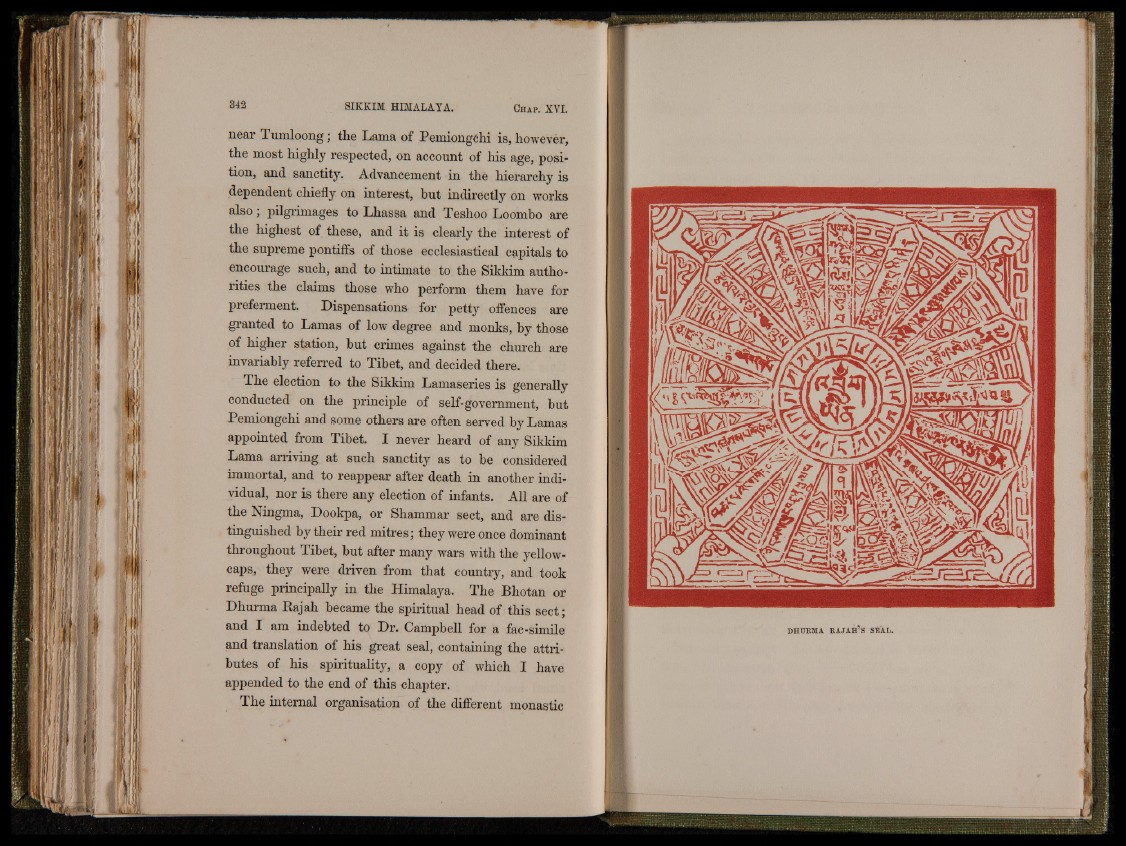
near Tumloong; tlie Lama of Pemiongchi is, however,
the most highly respected, on account of his age, position,
and sanctity. Advancement in the hierarchy is
dependent chiefly on interest, but indirectly on works
also; pilgrimages to Lhassa and Teshoo Loombo are
the highest of these, and it is clearly the interest of
the supreme pontiffs of those ecclesiastical capitals to
encourage such, and to intimate to the Sikkim authorities
the claims those who perform them have for
preferment. Dispensations for petty offences are
granted to Lamas of low degree and monks, by those
of higher station, but crimes against the church are
invariably referred to Tibet, and decided there.
The election to the Sikkim Lamaseries is generally
conducted on the principle of self-government, but
Pemiongchi and some others are often served by Lamas
appointed from Tibet. I never heard of any Sikkim
Lama arriving at such sanctity as to be considered
immortal, and to reappear after death in another individual,
nor is there any election of infants. All are of
the Ningma, Dookpa, or Shammar sect, and are distinguished
by their red mitres; they were once dominant
throughout Tibet, but after many wars with the yellow-
caps, they were driven from that country, and took
refuge principally in the Himalaya. The Bhotan or
Dhurma Rajah became the spiritual head of this sect;
and I am indebted to Dr. Campbell for a fac-simile
and translation of his great seal, containing the attributes
of his spirituality, a copy of which I have
appended to the end of this chapter.
The internal organisation of the different monastic